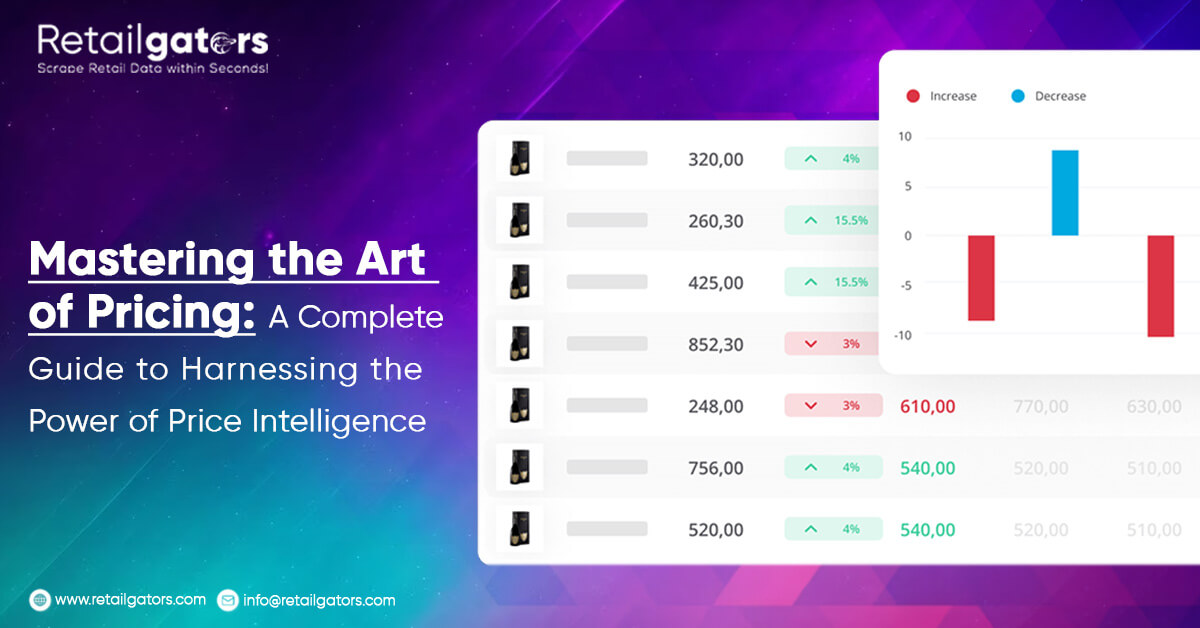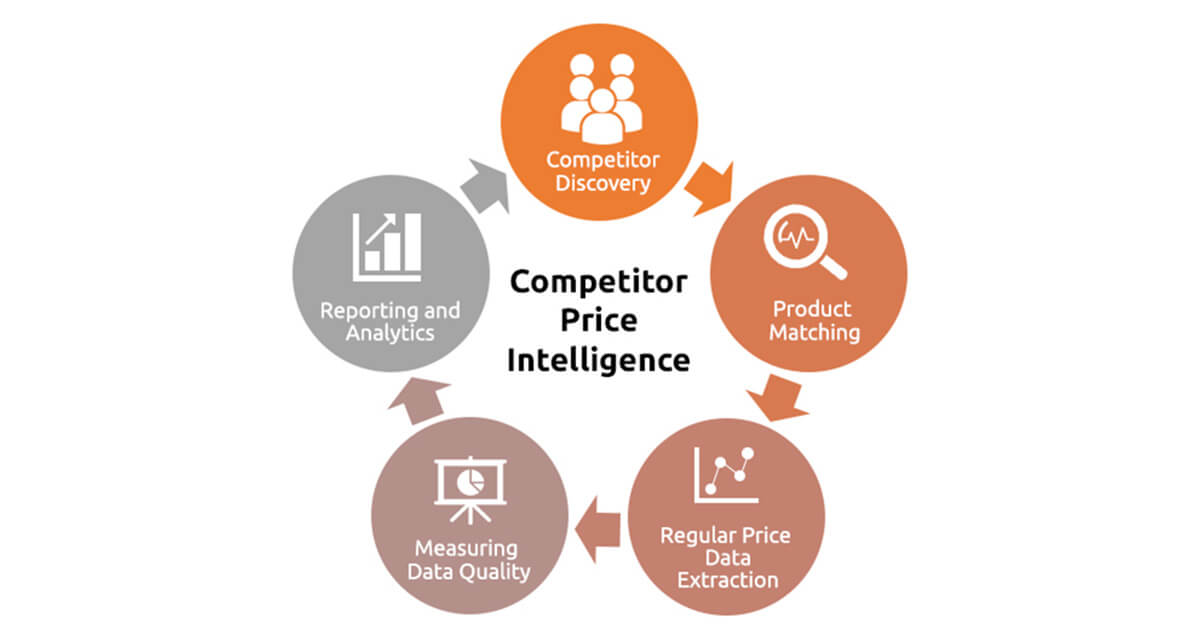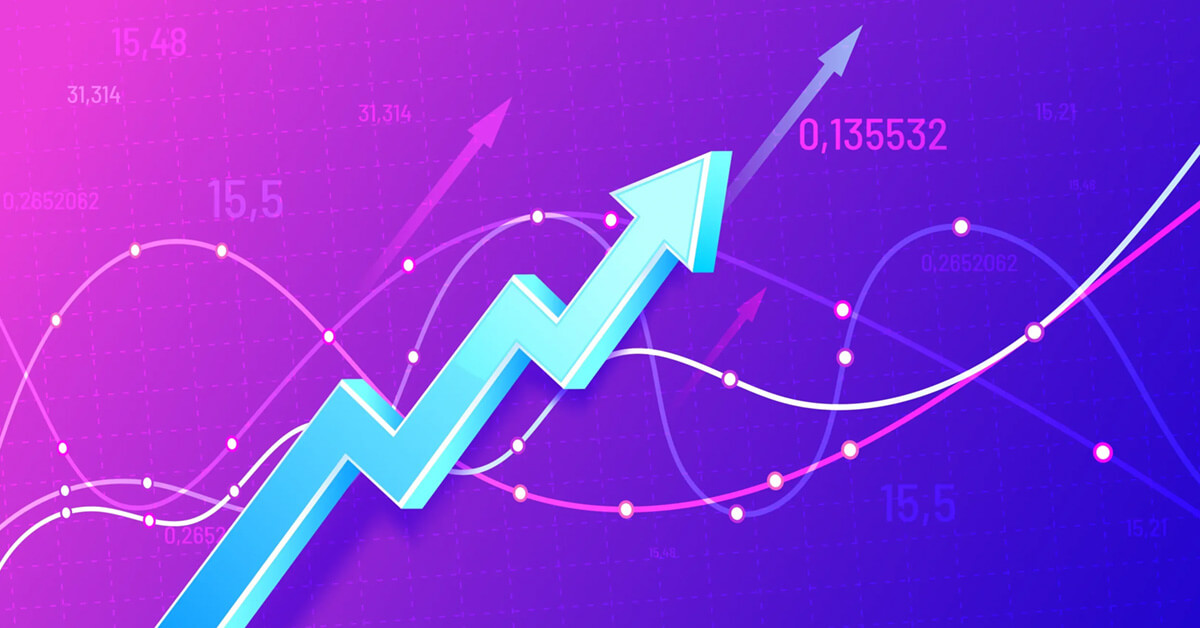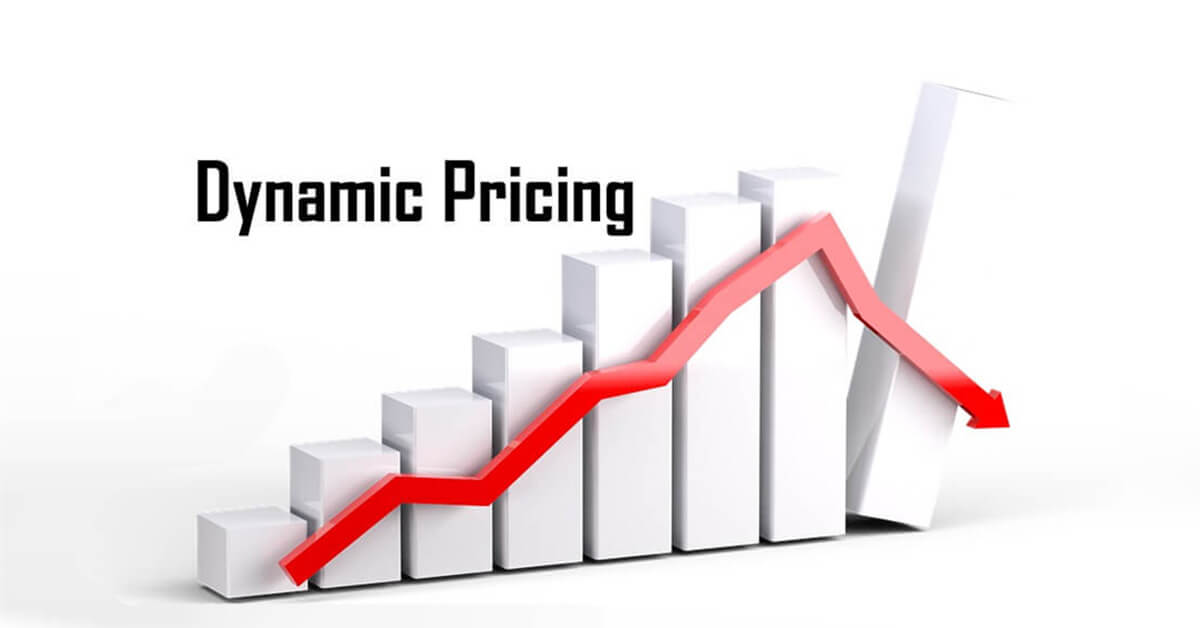
Deciphering price intelligence is an essential aspect of modern business, especially in the age of e-commerce and online retailing. Businesses can gain important insights into market trends, competitive activity, and customer preferences by efficiently tracking and analyzing price data.
There is a clear grasp of pricing intelligence. You'll know why it matters and how to use it effectively for maximum impact. This in-depth guide seeks to demystify the notion. This manual will give you the skills and information you need to succeed. This will help in the quickly changing world of online commerce. It is whether you're a manufacturer, retailer, or distributor of goods for e-commerce.
Understanding Price Intelligence

Price intelligence is when you can track, monitor, and analyze the market. You will need competitor pricing data to make informed decisions for your business. Intelligence is gathered through data mining and a variety of automated software solutions.
Price intelligence is a complicated topic. It involves the monitoring of competitor pricing and also responding to changes in cost.
Price intelligence involves mining data too to identify how the competitors are setting the base price for the products. For example, effective price intelligence requires a deeper analysis of the competitor's behavior. It also analyzes market position and fluctuating prices. This helps to understand the price strategies employed by the competitors selling similar items.
Price intelligence may also refer to price sensitivity. It focuses on how prices change and the frequency with which they change. Did you know that even Amazon reassesses the pricing every ten minutes? So, pricing intelligence helps compete with competitors selling a similar item.
Why does Price Intelligence Matter?

Price intelligence matters. It is because retail pricing is competitive, fast-paced, and constantly evolving. If the price is right or wrong, it will directly impact profitability and sales.
Do you have to ask yourself a few relevant questions, like, is my pricing competitive? Can I grow the existing margin? What can I do to attract more customers? What is it that my competitors are doing to have an edge? You can answer the questions promptly and efficiently through pricing intelligence. Gathering intelligence related to pricing can be very helpful for your business.
Consumers have become more aware and sensitive to pricing, It is because they can compare everything online. They can take out their smartphone and check for better pricing online. This is possible on a different channel.
Your competitors are probably offering better-priced products. As a result, you must catch up.
That's precisely why price intelligence matters for businesses. You can boost your sales. This is possible by knowing what competitors offer in the name of discounts and end-of-season sales.
Creating effective sales and marketing strategies is possible. This is possible when you have pricing intelligence.
Considering your competitors and margin, you can provide better customer service. After all, a business's priority is customer satisfaction. This is why pricing intelligence is essential.
Key Components of Price Intelligence
There are five key components of price intelligence. First, the cost is considered. It is because you can only price efficiently once you know the overall cost structure. Conventionally, businesses price products based on their expenses. However, purchasers don't consider that.
You must know what strategies your competitors use to price the products. Second, it's your customers. Are they willing to pay the price you're charging? Do they prefer your competitor's price over yours? Your customers should be able to purchase the product, so keep their expectations in mind. Third, you must remember the charges intermediaries make. It is when selling your products through their channels.
Is the relationship between you and the middleman beneficial monetarily? Fourth, you have competition for every product and service you provide. For example, even if you run a bathroom deep cleaning service, another competitor is trying to beat your pricing. You have to stay competitive and figure out who your competitors are. You could ask a few customers about what makes them pick a service over the one. Most will be candid with you and let you know what they prefer. Knowing what your customers want is essential.
Fifth, you must go beyond pricing and look at the compatibility factor too. Can you run a fast-food joint and ask for USD 20 for a dish? Be realistic about the target audience. You should know what they can pay for your products. Moreover, you must do some market research. You must do so before putting your products out on the market.
Leveraging Price Intelligence
You have first to find out who your competitors are. Once you have found out about these competitors, it is just the first step. Is their presence threatening your business and reputation? You have to figure this out first and then build strategies.
Then, you have to track, analyze, and monitor the data. Mine the data about their pricing and strategies they use to win customers.
Third, there are price intelligence tools that will let you gather all the relevant data. This will be about the competitor's pricing. Do you run an airport taxi service? A traveler visiting the city for the first time will opt for the one with better pricing.
Price intelligence is the future, and it is also the present. Knowing what your competitors are doing with their offers can help you develop a strategy. It will be the ones that work for you.
But first, understand and find out if you have a strong competitor.
Dynamic Pricing and its Strategies

Dynamic pricing is a strategy that uses variable pricing instead of a fixed one. Price may change at any given point for different groups of people. For example, some people book their flights beforehand. In this case, the pricing will be lower. But most business class passengers book their tickets at the last minute. As a result, the price goes up.
So, retailers change the pricing depending on the changing market. This act was considered illegal at some point. However, now you can notice dynamic pricing everywhere.
For example, the price of hotel rooms is higher in the holiday season around Christmas and New Year. The business persons want to use the desperation and need to churn big bucks.
So, you must figure out how to include dynamic pricing to make more profits.
Challenges and Risks of Price Intelligence
Let's check the first challenge of price intelligence. It is that even if you reduce the price of your products and services, you still need to do something. You still need to determine whether the customer chooses the competitor for other reasons. They may have chosen the competitor for speedy delivery, product quality, uniqueness, etc.
The second challenge is that your customers prefer to purchase the product offline. They don't do so not online through a third-party channel. So, even if you are reducing the pricing, customers will buy the product. They will do so only after seeing it with their eyes.
The third challenge is that you will need help knowing when to increase the product's pricing. You know your competitors are offering the product at a much lesser price. However, the cost will not remain the same. This is when you need to embrace dynamic pricing. Price intelligence may not tell you when to increase the pricing.
The fourth challenge is cost volatility. This is because the price of raw materials and labor may change at any given point. As a result, you have to set the pricing according to these volatile changes too.
Conclusion:
There are innumerable benefits. However, there are a few challenges to o price intelligence. In the end, you can combine both price intelligence and your judgment.
You may have indulged in trial and error. This will help to develop an effective pricing strategy.
Nonetheless, price intelligence is an effective tool. This helps to know your competition. You will also know what the customers want to pay for similar products.








Leave a Reply
Your email address will not be published. Required fields are marked